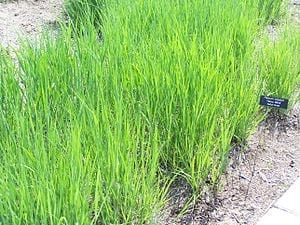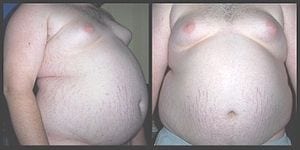
Robots are getting down to the size of insects, so it seems only natural that they should be getting insect eyes.
A consortium of European researchers has developed the artificial Curved Artificial Compound Eye (CurvACE) which reproduces the architecture of the eyes of insects and other arthropods. The aim isn’t just to provide machines with an unnerving bug-eyed stare, but to create a new class of sensors that exploit the wide field of vision and motion detecting properties of the compound eye.
The consortium, made up of researchers from CNRS, Aix-Marseille Université, EPFL at Lausanne, Fraunhofer Institute at Jena, and Université de Tuebingen, want to make a bit of a paradigm shift when it comes to camera design. Currently, most cameras are based on simple eyes. That is, the sort of eyes found in humans as well as those of other vertebrates and some molluscs. Essentially, it’s a box with a lens at one end and a retina at the other. This simple, yet elegant, arrangement has many optical advantages, but it isn’t the only way to make an imaging device.
The major alternative used in nature is the compound eye. This is a dense mosaic made up of many tiny eyes. When you look at a dragonfly, for example, you’ll notice that the head is almost all eye. Or rather, a collection of eyes. In this arrangement, each facet of a compound eye is a fully functional eye. The major difference is that by making an eye up of segments, the entire organ has much lower resolution. To put it in everyday terms, if a person had compound eyes, they’d each have to be as big as the entire head to have the same resolution as regular eyes
If the resolution is so bad, why compound eyes? The answer is that they have their own strengths. Compound eyes have a very large field of vision. The cross section of a compound eye is also thin, so it can wrap around an animal’s head without sacrificing the interior. And it’s extremely good at detecting motion.
How this motion detection works in insects and other arthropods is tricky because we don’t understand quite how vision works in, say, a fly. It has thousands of tiny eyes, but does it see thousands of tiny images? That’s hard to say because we don’t know what it sees, or if it even “sees” in any way that we would understand.
The Latest Bing News on:
CurvACE
- Mosca inspira olho artificialon January 23, 2021 at 9:06 am
Uma tecnologia chamada Curvace (sigla em inglês de Curved artificial compound eye, ou componente ocular artificial curvo), que reproduz a arquitetura dos olhos das moscas drosófilas, foi desenvolvida ...
The Latest Google Headlines on:
CurvACE
[google_news title=”” keyword=”CurvACE ” num_posts=”10″ blurb_length=”0″ show_thumb=”left”]
The Latest Bing News on:
Artificial compound eye
- Better Artificial Intelligence (AI) Stock: Nvidia vs. Super Micro Computeron May 10, 2024 at 1:46 am
You may be surprised to find out which one of these two high-flying stocks is the better bet for investors right now.
- CRISPR-based gene editing treatment shows promise for rare eye disorderon May 9, 2024 at 8:08 am
Researchers at Oregon Health & Science University used an experimental CRISPR-based gene editing treatment in participants with a rare eye disorder that causes low vision and blindness. The results ...
- The Future of Antibody-Drug Conjugates in Lung Cancer Treatmenton May 9, 2024 at 6:52 am
Drs Jacob Sands and Benjamin P. Levy discuss antibody-drug conjugates in lung cancer treatment, including differences in efficacy, toxicity profiles, and what the future holds.
- Artificial Intelligence, Psychedelics, and Psychotherapy Working Together to Fight Chronic Painon May 6, 2024 at 4:45 pm
Western medicine has long treated chronic pain by focusing only on pain receptors; two Dallas scientists are working to rewrite this approach.
- India’s AI Skills Gap: Millions Trained, But Only 2,000 Can Build Core AI Productson May 6, 2024 at 6:00 am
Despite the rise in AI training within IT firms, India has less than 2,000 senior AI engineers building core AI products and services. Gap ...
- Eye Care Newson May 5, 2024 at 5:00 pm
Organic Compound Found in Trees Could Prevent ... with diabetes concludes that so-called autonomous artificial intelligence (AI) diabetic eye exams significantly increase completion rates of ...
- Curzon Relaunches Specialist Distribution Label Artificial Eyeon May 1, 2024 at 2:54 pm
Artificial Eye, the arthouse distribution company established in 1976 by Curzon Cinemas, is set for a re-launch as a theatrical and home entertainment label.
- U.K.’s Curzon Relaunching Arthouse Distribution Label Artificial Eyeon April 30, 2024 at 9:31 am
U.K. outfit Curzon — part of the Cohen Media Group — is set to relaunch Artificial Eye, the arthouse distribution label that was established in 1976 and has been on hiatus for the last decade.
- U.K.’s Curzon Relaunching Arthouse Distribution Label Artificial Eyeon April 30, 2024 at 8:31 am
Ten years after it went on hiatus, Brit arthouse label Artificial Eye is being relaunched by Curzon with Iranian drama 'My Favourite Cake.' ...
- Curzon to relaunch distribution label Artificial Eye with Iranian romance ‘My Favourite Cake’on April 29, 2024 at 5:00 pm
The UK’s Curzon is to relaunch its specialist UK/Ireland distribution label Artificial Eye, as a theatrical and home entertainment brand. The first release under the banner will be Maryam ...
The Latest Google Headlines on:
Artificial compound eye
[google_news title=”” keyword=”artificial compound eye” num_posts=”10″ blurb_length=”0″ show_thumb=”left”]









